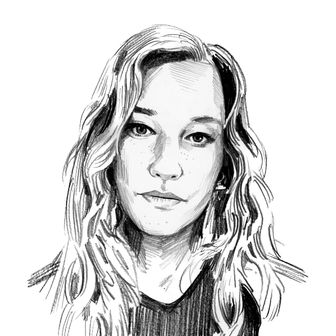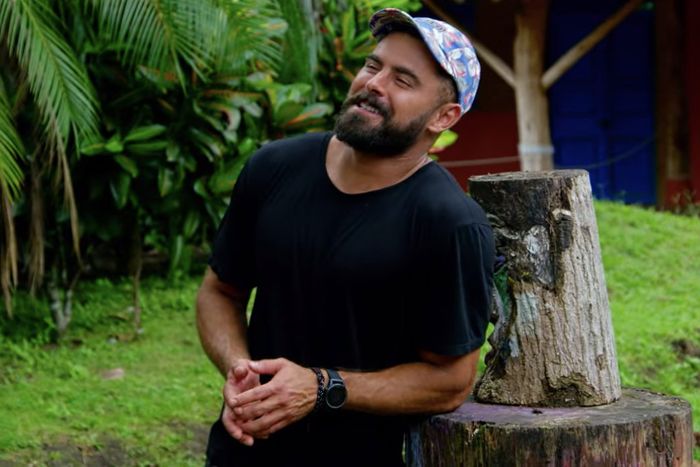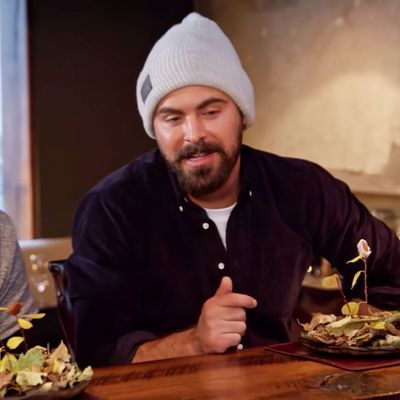
Zac Efron has taken many forms over the course of our (my and Zac Efron’s) shared lifetimes. When we were first introduced, Zac was a petite, elfin hunk, his shellacked hair fitted perfectly into the arc of his head like a Lego piece. For a few years thereafter, he embraced a windswept teen-idol look, his locks perpetually flowing sideways as if he were very slowly being sucked into an industrial fan. Soon thereafter, he became Baywatch Zac, a man so swole and bronzed he looked as if he may burst forth from his own flesh at any moment. A few iterations later, Zac bleached his hair a ghostly blonde and shoved his prodigious arms into various aviator jackets with shearling collars. As such, it is nearly impossible — and inadvisable — to hold a fixed image of Zac Efron in your mind’s eye. One moment he is cosplaying a character from The L Word; the next, he is going to murder you if you don’t get off of the rope swing at the Santa Monica pier.
In his new Netflix show, Down to Earth With Zac Efron, Zac has yet again shape-shifted without warning, this time into what can only be described as a coffee-shop-owning lumberjack daddy with two young children who’s been divorced for a year but counts his ex-wife among his best friends and spends two hours every morning engaging in breath work and mindful meditation before feeding his family overnight oats. His thighs burst forth from skintight denim. His flannels hug his only slightly degraded Baywatch muscles. Sometimes he is heavily bearded; sometimes he is not. At one point, he puts on a very long shark bathing suit. He wears sunglasses on his shirts, but rarely on his face. He looks freaking amazing, and has also never been more endearing as a public figure, coming across as a tender bro extremely eager to find meaning in his once-shallow life and believing he will find it via a Netflix series.
Down to Earth stars Zac and his “exotic superfood expert” friend Darin Olien — an utterly bizarre pairing that is never really explained and would require an additional 3,000 words to unpack. Ostensibly, the show’s central point is for Zac and Darin (again, whomst?) to gently demonstrate how other countries suck much less than America does, and how we might start to imitate these countries so that we don’t soon become subsumed by our furious, boiling oceans. (Zac and Darin, living blissfully as they are in a pre-coronavirus world wherein the concept of a shared American sacrifice seems possible, do not yet understand their mission’s utter futility; this, paired with Zac’s humming sense of existential despair about his early and intense fame, lends the show a tragic pathos.) Each episode sees the pair visiting a different country, learning about its greatly superior and more sustainable means of production, eating things like reindeer tartare, diving into various bodies of water, saying “wow” and “amazing” a lot, quietly irritating each other, and occasionally doing movie-character impressions.
In an attempt at “relatability” (nobody can or should try to relate to Zac Efron, who I am convinced, after watching all eight episodes of this series, has lived 10,000 lives and is weighted down with several millennia’s worth of inescapable angst), Down to Earth often breaks the fourth wall: Zac feeds Icelandic bread to his cameraman; Zac has a tense interaction with a French intellectual who doesn’t appreciate being paused while Zac’s mic is adjusted; Zac directly addresses some depressing aspect of being famous, then walks it back because he still needs to be famous in order for this show to work. Down to Earth is, ultimately, a sweet and admirable effort, albeit one that’s deeply awkward and random. It is, as my editor Katy put it, “Goop for bros who don’t want to have kids because of climate change.” But each time dear Zac cheerfully visits yet another power plant and deems it “sick,” one does come away with a sense that America’s greatest sustainable product is Zac Efron.
As has been the case throughout his career, Zac’s fashion choices on Down to Earth seem to reflect his inner monologue. In each country, Zac quietly but noticeably tweaks his newfound “hipster sheep farmer taking selfies for his first Hinge profile” style for each country he visits. In Iceland, he wears at least 14 different beanies, never pulled all the way down over his head, as if to suggest a casual affinity for the hats, but not a commitment. In France, he shaves his beard down significantly and skateboards a lot, perhaps to appear even less French. In Costa Rica, he dresses like a Brooklyn media professional circa 2017. Below, I’ve described and unpacked each of his eight country-specific looks, partly in an attempt to understand the personal meaning/existential crises behind his fascinating fashion decisions, and partly in an attempt to understand why I watched eight episodes of Zac Efron’s travel show.
Iceland
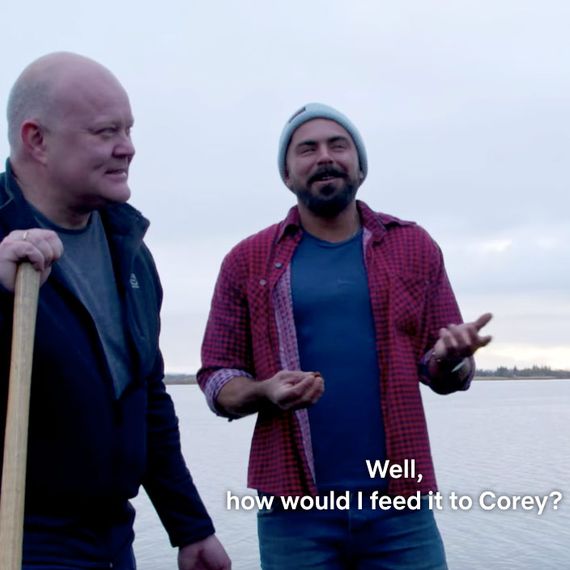
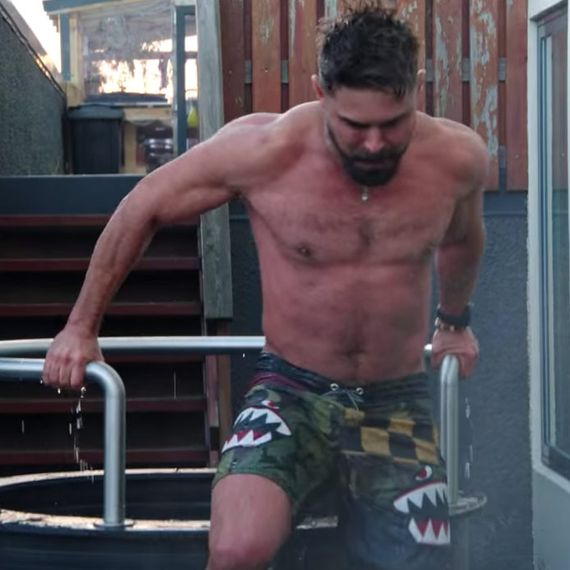
My understanding of Zac’s understanding of Iceland is that it is literally made of ice. And Zac hates ice. I know this because at least three minutes of this episode are devoted to Zac’s fear of getting into a very cold bath before a very hot bath before a “fire and ice” massage at a Hilton hotel in Iceland. I also know this because in Iceland, Zac is at his lumberjack daddiest, dressing as if he is about to be asked to walk into the middle of a frozen pond and build a log cabin from scratch at any moment. He wears multiple beanies in various colors, seemingly purchased from Moosejaw. He has an extremely thick beard, which he pairs with multiple flannel shirts buttoned to various heights, increasingly snug denim, workman’s boots, and, often, the color maroon. At one point, he wears a shark bathing suit that is far, far too long, suggesting that Zac has not kept up with current bathing suit trends. Even so, he looks powerfully good at all times.
France
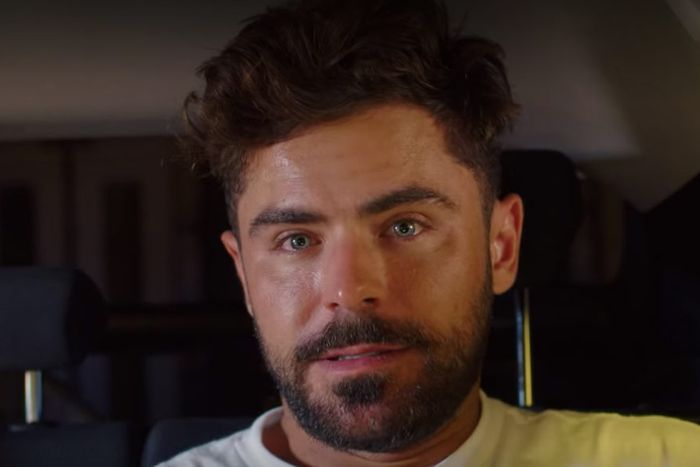
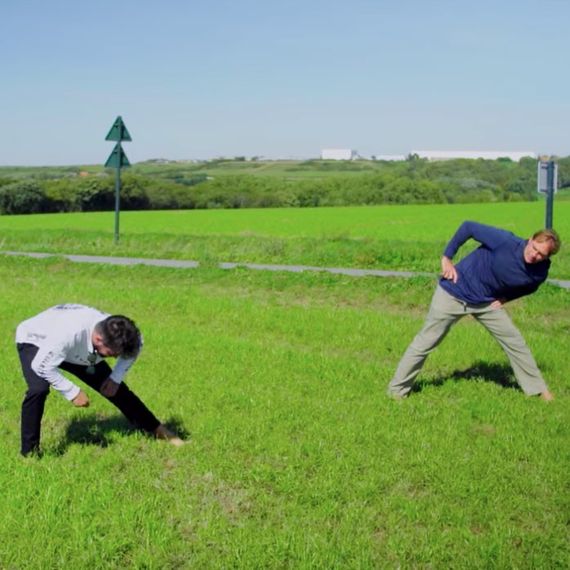
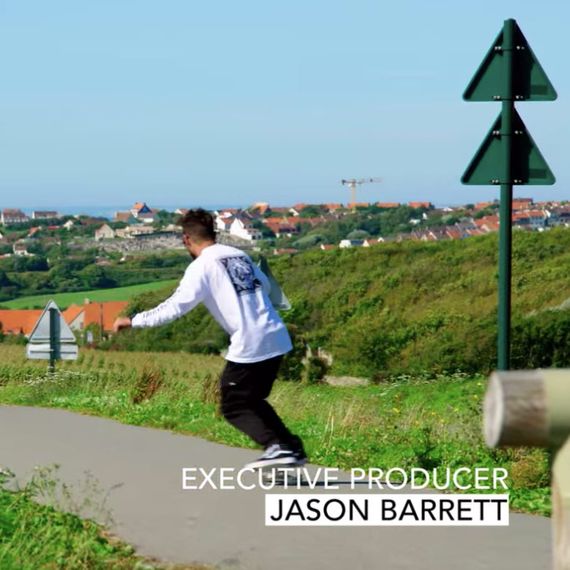
The theme of France’s episode is “water.” Zac begins this episode at a French restaurant in L.A. tasting various types of water with a “water sommelier” and “my friend Anna, who makes everything fun.” (This is Anna Kendrick. We do not see or hear from her again.) Zac’s look is, perhaps not coincidentally, watered-down and more surfer-bro/skater-boi than it is winter-bearish: He wears several RVCA long-sleeve T-shirts, baggy cargo pants, Vans, a pair of sunglasses pinned to his shirt, a medium-length beard, and a poofy hair swoop that suggests he has just returned from a rad early-morning surf (after feeding his children overnight oats). At several points he literally breaks out a skateboard and rides around the French countryside. Why is Zac dressing like a California boarder in France? Why, on the drive to Paris, does Darin ask him if he can make himself cry, and Zak does so, within seconds? Ostensibly, because of water.
Costa Rica
Zac’s vibe in Costa Rica can only be described as “media professional on book leave living in Williamsburg.” The beard is back in full force, although this time, it’s paired with pastel baseball hats, dark denim, plain T-shirts, and something around the eyes that says, “I am writing auto-fiction.” Zac spends the episode studying “eco-villages”; at one point he explains the word “ex-pat.” Later he puts his RVCA shirt and board shorts back on to visit a small island full of hot people. He admits to his local guide that, for a long time, he felt he’d been “on a treadmill” and began focusing on sustainability as a way to give his life meaning. I feel 12 percent closer to understanding both this show and his new lewk.
Sardinia
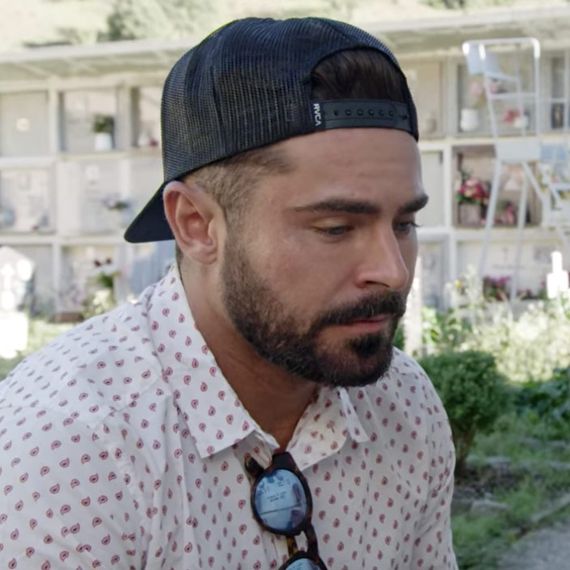
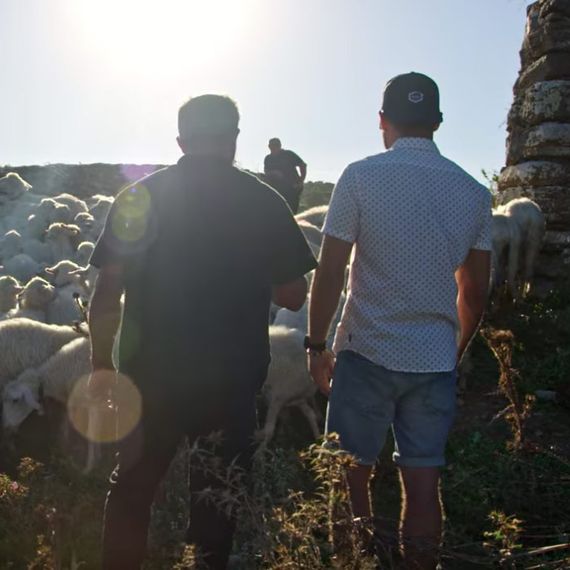
“I gotta get out of Hollywood, man,” Zac says at the beginning of the episode. “It’s not a place conducive to living a long, happy, mentally sound life.” Four seconds later, he comes back in voiceover: “No, I’m not leaving Hollywood. I would never do that.” If you’re confused, that’s okay, so is our dear Zac. In this episode, with a shorter beard and a prominent goatee, Zac wears a collared button-down T-shirt with a backward hat and denim shorts while herding sheep on a mountaintop in an attempt to understand why Sardinians live so long while also coming to terms with his own inevitable death. Zac soon learns that carbs are not the enemy (“I haven’t had carbs in years; when I shot Baywatch, I didn’t eat carbs for six months and I almost lost my mind”) and that he should be, in fact, eating a low-protein diet, all while wearing this very high-protein look, evoking a fledgling daddy going to work at his actual daddy’s real-estate corporation for the summer. Later in the episode he says he’s often felt isolated and alone, but has never felt less lonely in his life than he does while filming this show with his crew. Zac!
Lima
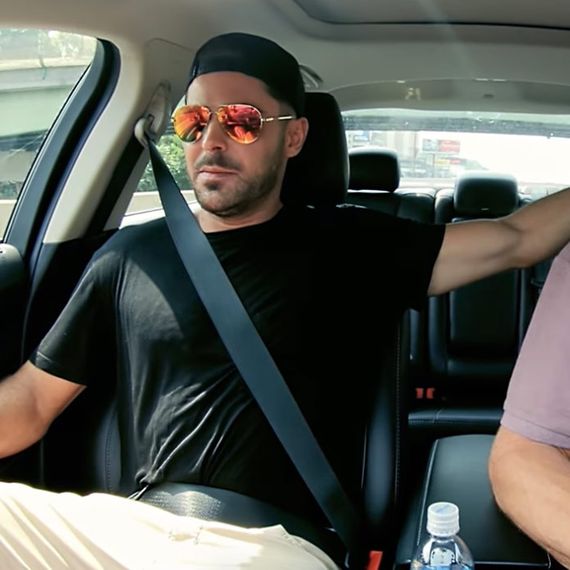
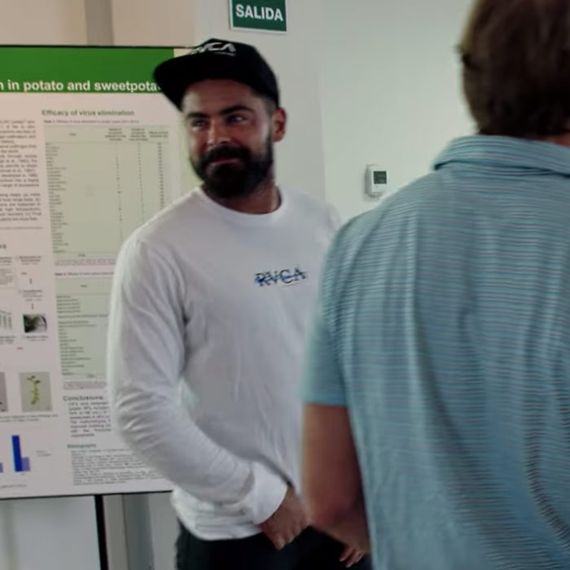
Zac and Darin begin this episode by driving through New York City, discussing the Kazakhstani origin of apples on the way to an upstate orchard. Zac is resplendent in tight khakis, a black T-shirt, an extremely fitted black backward hat, and pink aviators — a classic “day to night” look for all New Yorkers (one traditionally puts on the hat and glasses at night). The two have a revealing conversation about how a young, teen-bop Zac felt pressured to “look okay” in front of the omnipresent paparazzi or his mom would call him and say, “Ugh, you look disheveled.” He explains that he “feels like I’m getting dressed for a runway show every day.” The men then discuss, a little heartbreakingly, how Zac quickly realized that fame was a “glitch in the matrix” and he “hasn’t contributed anything to society. I do want to stand for something in life.” Suddenly I understand and empathize with all of his outfit decisions on a holistic level, and I also want to go to couples’ therapy with him (in this scenario, we are a couple). Anyway, in Lima, Zac spins his hat forwards and puts on another RVCA long-sleeve T-shirt while learning about how potatoes are cryopreserved in the event of an apocalyptic disaster. (“World famine is just a whole other situation,” he observes.) At one point they eat a potato dish that looks exactly like the coronavirus. Did Zac Efron’s travel show predict the coronavirus? Is Zac Efron’s travel show sponsored by RVCA? Just asking Qs.
Puerto Rico
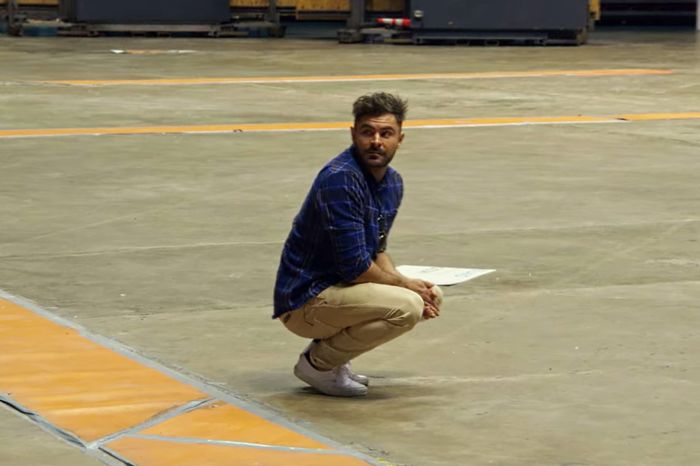
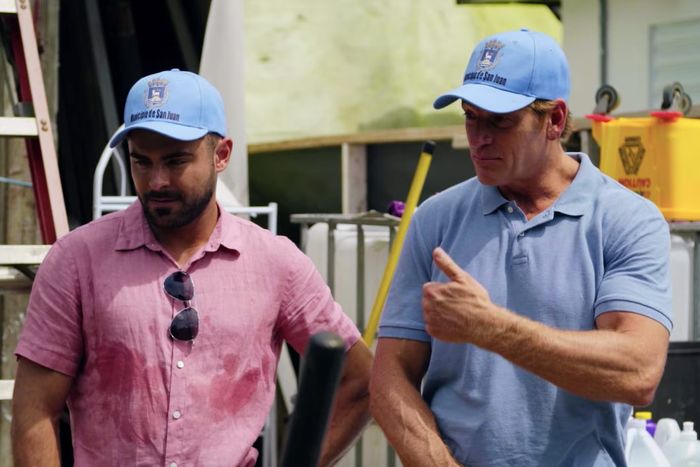
Zac and Darin visit San Juan, where Darin continues to do things like put on accents for no reason and do handstands in public. Fashion-wise, Zac is at his most basic “bro headed to a nice dinner” in this episode, perhaps out of a sense of respectability (there is a lot of talk about the hurricane and climate change). He wears no hat whatsoever (!), khakis and white sneakers, a very short beard/goatee situation, and muted flannels and pink polos to meet the mayor of San Juan, Carmen Yulín Cruz, and visit various sites damaged by Hurricane Maria. Zac very sweetly helps a local woman clear the debris from the ruins of her home. “Sometimes, helping other people is the best way to get out of your own head,” he says. Later, as he nervously milks a goat, he re-wears a (you know what brand, don’t make me type it again) flannel shirt for what appears to be the first time on this show. I am now 100 percent convinced that said company is sponsoring this show, along with a credit card company I will not name and a hotel chain I will not name because I am not a tool of the man.
London
Zac has descended entirely into wearing exclusively That Brand and I refuse to help him promote it any further. I will not fall victim to this malevolent scheme!! Let’s just say in this episode, Zac skews a little bit hypebeast, wearing a flat-brimmed hat and black T-shirt and tight jeans and white sneaks, doing his best attempt at Cool London Streetwear as he travels to London to learn about pollution (namely, that it is bad). But he also wears a beekeeper outfit twice, and it’s not not erotic. He and Darin ask an actual beekeeper about which types of bees are the happiest — urban or country? — and at one point, Zac sighs, “Everything is better in Europe.” Except Zac’s fashion. At this point, it has devolved from scruff daddy to American Who Thinks Everything is Better in Europe. Maybe he’ll redeem himself in the final episode.
Iquitos
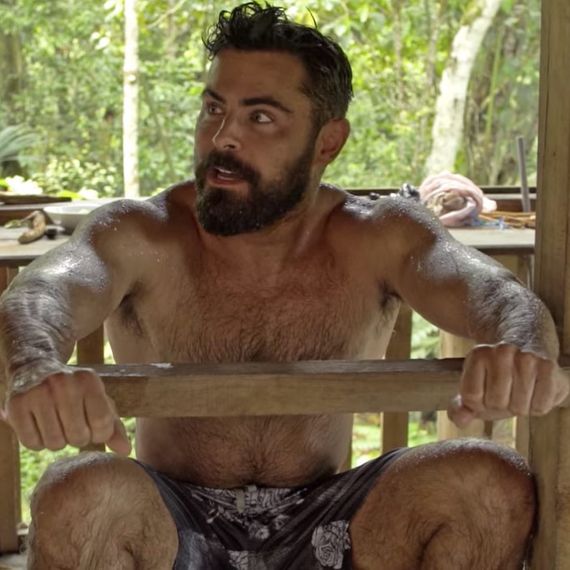
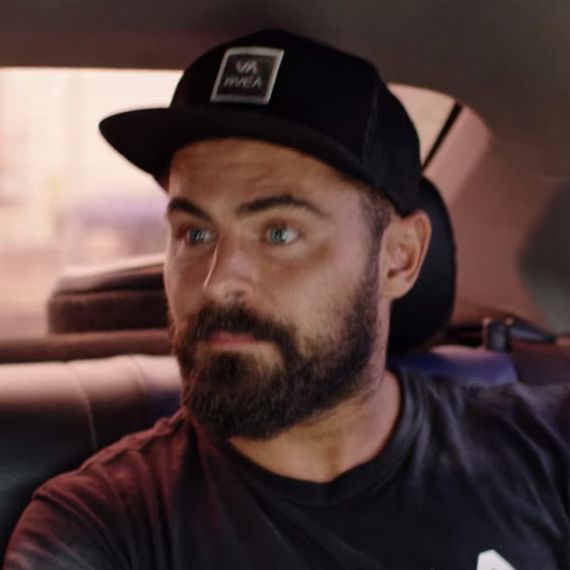
We have now reached the end of our literal and metaphysical journey with Zac (… and Darin). The episode begins with Zac in another long pair of swim trunks, this time decorated with roses; I am not complaining, however, because he is back to his Full Daddy beard and also topless, briefly harkening back to his quietly tortured lumberjack vibes from episode one. It’s a gift, and I am grateful. Unfortunately, in the scenes thereafter, Zac regresses yet again into a skater-boi brand machine in long-sleeve T-shirts, cargo shorts, and flat-brimmed hats. Probably sweating profusely, Zac cruises down the Amazon. “I can’t believe this place exists,” he says. Later, Darin describes a milk derived from a jungle fruit as “milky forest power,” and I slowly begin to decompose. I am revived when Zac engages in “ayahuasca tourism,” which, as he explains in voiceover, is a “huge thing”. (He does not do actual ayahuasca, but rather, sits in the steam of seven ayahuasca-adjacent plants …?) The two end their journey as Darin monologues for a very long time in the back of the car about saving the Earth. Zac’s face, shrouded as it is in stunning facial hair, ultimately says what all of us are thinking. He concludes by quite literally saying what all of us are thinking, specifically about Down to Earth With Zac Efron: “The more we learn,” he muses, “the more questions we ask.”


